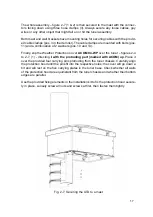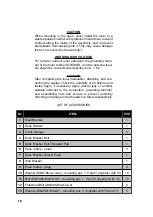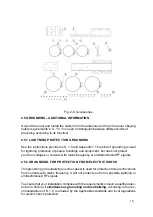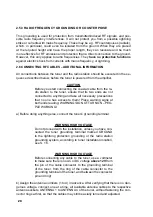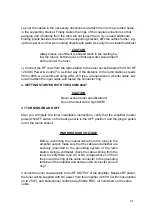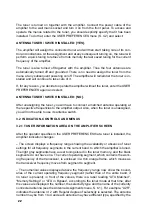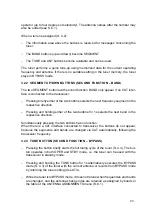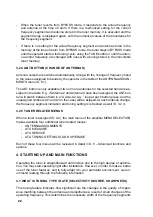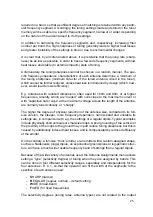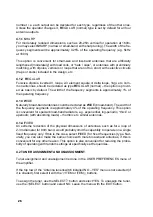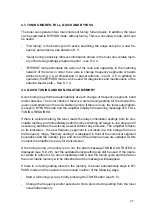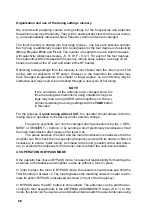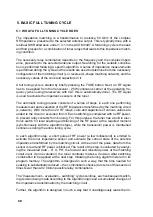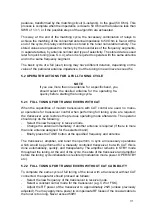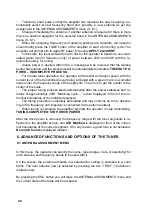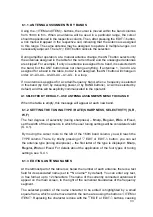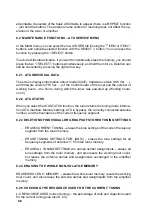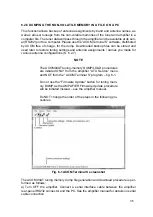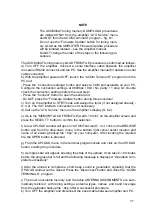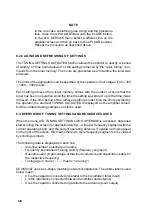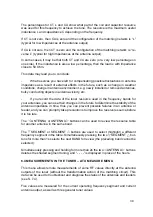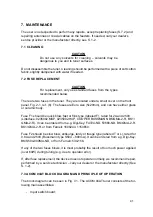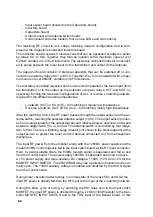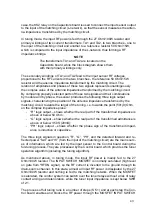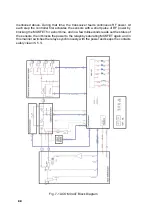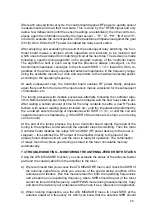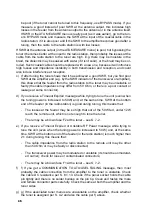
31
pedance, transformed by the matching circuit (L-network), to the goal (50 Ohm). This
process is complete when the impedance is close to 50 Ohm with a tolerance less than
SWR of 1.3:1, or if the possible steps of the algorithm are exhausted.
This way, at the end of the matching cycle, the necessary combination of relays to
achieve the matching of the connected antenna impedance to 50 Ohm is found. At the
end of the cycle, this relay combination is stored in the tuner nonvolatile memory. The
stored values are organized in memory by the boundaries of the frequency segments,
in separate tables, by antenna number and type of selectivity. The stored data is used
later for quick tuning (see S. 4.4), when it is required to operate with the same antenna
and in the same frequency segment.
The basic cycle of a full (user) tuning may have different duration, depending on the
value of the particular antenna impedance, but the tuning time will never exceed 5s.
5.2 OPERATOR ACTIONS FOR A FULL TUNING CYCLE
NOTE
If you use more than one antenna for a specific band, you
should select the desired antenna for the operating fre-
quency before starting the tuning cycle.
5.2.1 FULL TUNING FOR TRANSCEIVERS WITH CAT
When the capabilities of modern transceivers with CAT control are used, no manu
-
al operations for transceiver control when performing full tuning cycle are required;
the transceiver even restores the previous operating mode afterwards. The operator
should only do the following:
-
Select the new frequency in receive mode.
-
Change the antenna immediately, if another antenna is required (if there is more
than one antenna assigned for the selected band).
-
Briefly press the TUNE button at the specified frequency and antenna.
The transceiver, amplifier, and tuner then perform in sync all necessary operations
which would be performed for a manually controlled transceiver, but with CAT this is
done automatically, quickly, and transparently. The amplifier remains in STBY mode
throughout the tuning. At the end of the cycle, the state of the transceiver and amplifier
before the tuning cycle initialization is restored (modulation mode, power, OPER/STBY
etc.).
5.2.2 FULL TUNING FOR TRANSCEIVERS WITHOUT CAT CAPABILITY
To complete the same cycle of full tuning of the tuner with a transceiver without CAT
connected, the operator should proceed as follows:
-
Select the new frequency of the transceiver in receive mode.
-
Select a constant carrier mode for the transceiver (e.g. CW or FSK).
-
Adjust the RF power of the transceiver to approximately 25W (unless previously
adjusted). You may apply more power to compensate RF losses if the coaxial cable to
the tuner is too long. Never exceed 50W!
Summary of Contents for ACOM 04AT
Page 1: ...1 ...
Page 57: ...2 2 ...

